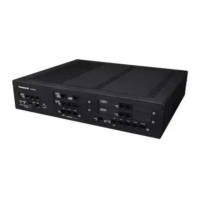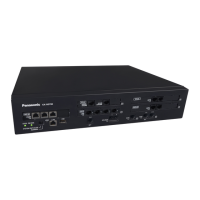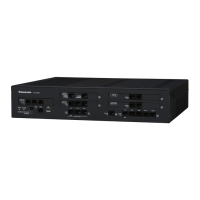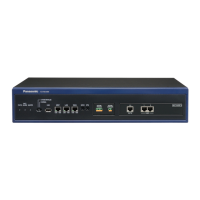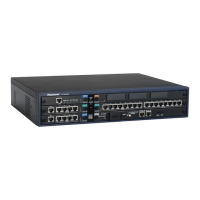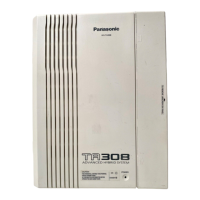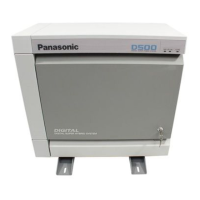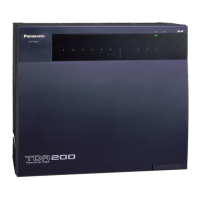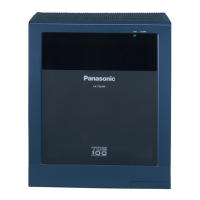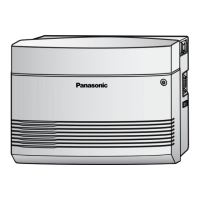2.6.3 Last Number Redial
Description
Every extension automatically saves recently dialled external telephone numbers and extension numbers to
allow
the same number to be dialled again easily. Through system programming, the outgoing call log can be
set to log dialled extension numbers.
Automatic Redial:
If Last Number Redial is performed in hands-free mode and the called party is busy, redialling will be
automatically retried a preprogrammed number of times at preprogrammed intervals. The Redial Call
No-answer Ring Duration time is programmable.
This feature is available only on certain PT models which have the SP-PHONE button.
Outgoing Call Log:
Information on outgoing trunk calls and intercom (including TIE) calls is automatically logged at each extension.
Users of display PTs can view details of a preset number of recently dialled telephone numbers, and easily
call the same party again.
Conditions
[General]
• If a new number is dialled when the Outgoing Call Log is full and/or Automatic Redial contains a number,
the data of the oldest stored call will be deleted, and the new number will be stored.
• If any dialling operations are performed or an incoming call is answered during Automatic Redial, Automatic
Redial is cancelled.
• Automatic Redial may not be available depending on the busy tone pattern.
• Automatic Redial is not available on SIP extensions.
• Interrupt Redial
When an outside party, seized trunk, or extension number (including TIE connections) is busy, a user can
attempt to redial the number by pressing the REDIAL button without going on-hook. This can be performed
several times without having to go on-hook.
• Outgoing Call Log Display by REDIAL Button
Pressing the REDIAL button on a display PT while on-hook can display the Outgoing Call Log. System
programming is required for this operation.
• If the Outgoing Call Log is used to redial an outside party or an extension number (including TIE
connections) or if a number that is already stored in the Outgoing Call Log is manually redialled again, the
number will be stored in the call log multiple times. However, calls made using the REDIAL button are not
stored in the Outgoing Call Log again.
• It is possible to change the number of records that can be stored at each extension through system
programming.
• To log intercom calls in the outgoing call log, refer to "10.9 PBX Configuration—[2-9] System—System
Options—Option 7—
Outgoing Call Log—Extension Call" in the PC Programming Manual.
• Logs for multiple calls to the same destination are combined and displayed with the most recent call log.
• If an extension user makes a call over a TIE connection using the PBX Code method
(Access with PBX
Code), the outgoing call log does not display the Access Code on the PT’s display.
• If an extension user uses a DSS key to make a call to another extension, the user can use the redial feature
to call the same extension number.
• If an extension user uses an SDN key to make a call to the corresponding owner extension, the user cannot
use the redial feature to call the owner extension again.
122 Feature Guide
2.6.3 Last Number Redial
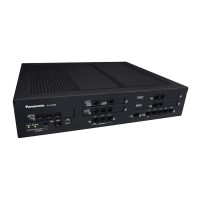
